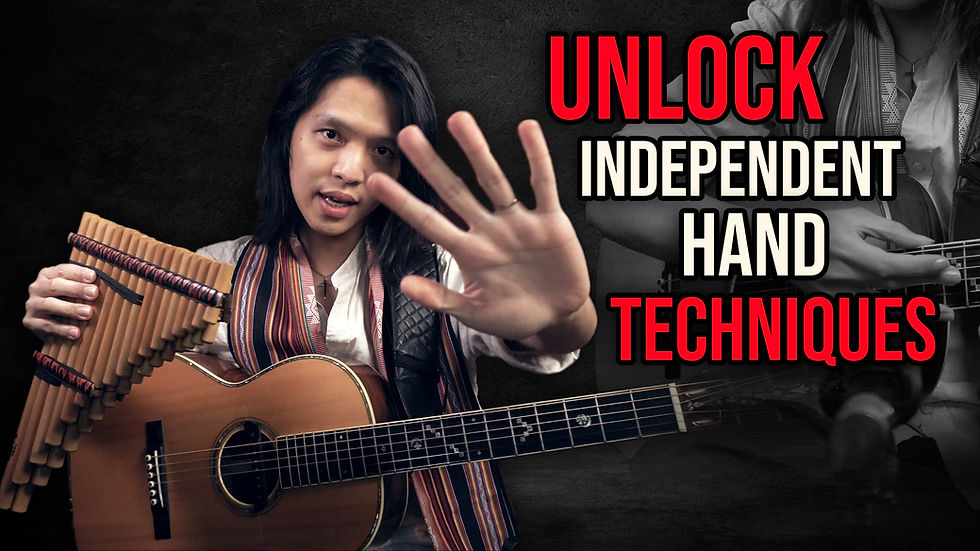How are Indian and Western Music Different?
- Neil Chan

- Nov 15, 2021
- 3 min read
Introduction
Indian and western music are two vastly different musical cultures that have, for the most part, developed independently of each other. Today we're going to look at the one key difference between these two well-developed art forms that starkly distinguishes them from each other: Harmony.
Welcome to 'Ethnomusicology For The World', my online lesson series where I strive to help the world better understand and appreciate its diverse musical cultures.
Before You Begin:
Download my free resources to guide you along!
Indian & Western Classical Music
Before we delve deeper into the topic, we need to clarify that we're going to discuss both Indian and Western classical music. There have since been many modern fusions between the two cultures such as Hindi film music and even the music of the Beatles, but we're not going to discuss those today.
Indian classical music has two main forms - carnatic music of South India and Hindustani music of North India. While I'll be focusing on Carnatic music, as that is what I am trained in, the same concepts will apply to Hindustani music as well.
Harmony in Western Classical Music
Perhaps the hallmark feature of Western classical music is that of harmony - the sounding of simultaneous pitches together to create specific aural sensations. Harmony has developed tremendously since its humble origins in early church plainsong. Today we have complex chords and chord progressions that evoke a myriad of emotions and generate a sense of movement in the music.
See the video for a very popular and beautiful chord progression of Pachelbel's Canon in D.
A very common characteristic of chord progressions is that the chords change at very specific points in the music. In Canon in D, for example, the chord changes every two beats. Keep this in mind while we discuss Indian classical music next.
The Absence of Harmony in Indian Classical Music
On the other hand, Indian classical music does not have the concept of harmony at all, at least not in the manner it is conceptualised in Western classical music. The only relationship between simultaneously sounding pitches of concern in Indian classical music is that between any note and the tonic pitch or shruti. This tonic pitch is normally sounded as constant drone by an instrument called a tanpura or shruti box.
Now, you might initially think that this absence of harmony makes Indian classical music less complex or developed than its Western counterpart. This is absolutely not true and in fact, it many senses it is quite the contrary.
Because the concept harmony is virtually non-existent in Indian classical music, the music is no longer restrained by the fixed static notes of chords or the designated points where chord changes take place. This means the elements of melody (shruti) and rhythm (laya) are free to develop into extremely intricate and complex forms.
Freedom in Rhythm
To demonstrate how this works in the realm of rhythm, we'll look at a rhythmic composition in an 8-beat cycle called adi tala. Notice how the absence of harmony allows us to place musical accents in-between the beats freely, which would be impossible if we were bound by the fixed chord changes of Canon in D.
Freedom in melody
The same freedom is also to be found in the melodies of Indian classical music. Melodic entities (svaras) are sung or played with intricate movements and oscillations (gamakas), which would not be possible if bounded by the static pitches which make up chords in western music.
Specific svaras and gamakas are organised into distinct melodic modes called ragas, each evoking different emotions.
Watch the video to see a brief demonstration of raga Mayamalavagowla!
Conclusion
I hope this little introduction to the key difference between Indian and Western music has been eye-opening for you. At the end of the day, neither musical culture is better than the other. Instead, what you have gained from this video is a better understanding and appreciation of these two musical cultures, and how they have both intricately developed so distinctly from one another.
Do leave a comment with any questions you might have and I'll do my best to answer them. Follow along my musical journey on my YouTube, Instagram, Facebook, and website www.neilchanmusic.com as I share new music videos and lessons each and every week.
Until next time, I'll see you again!
By Neil Chan

.png)




Comments